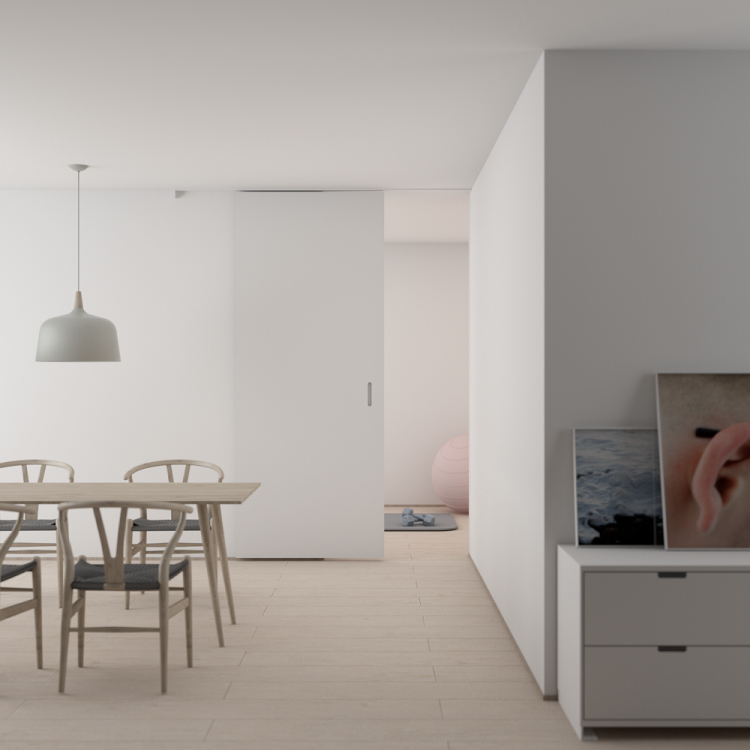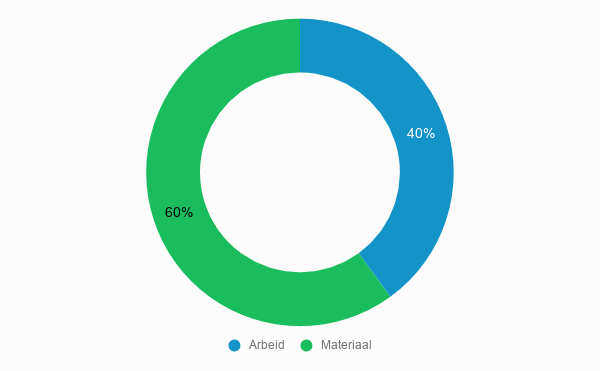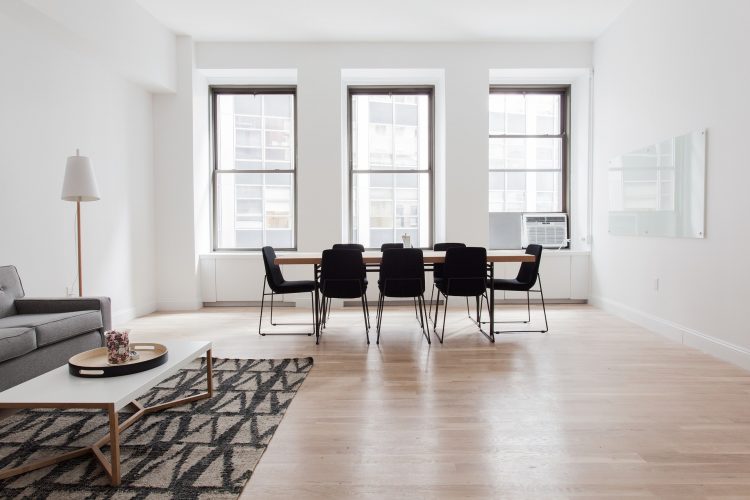Are you suffering from cold in your home, fed up with expensive energy bills or want to live more sustainably? Then insulating your house is a good option. In this article you will find a comprehensive overview of all options, materials and the corresponding costs. So you can judge for yourself which insulation measure suits your house best.
How much does insulating your house cost?
The price depends on three different factors: what you want to insulate, which material you use and how big the surface is. An indication of the average price (in m²) per insulation measure is shown in the table below.
| Isolation measure | Average price per m2 |
|---|---|
| Cavity wall insulation | £ 15 – £ 25 |
| Roof insulation | £ 50 – £ 85 |
| Floor insulation | £ 33 – £ £ 70 |
| Gable insulation | £ 60 – £ 130 |
| Glase insulation | £ 125 – £ 190 |
Find the best specialist for your project and get free quotes.
Start

Why should you have your house insulated?
Insulating your home not only ensures a nice warm house, but has many other advantages. For instance, insulation increases living comfort by eliminating draughts and in summer it will ensure that the heat stays outside. Besides increasing the comfort of your home, insulating it also has financial advantages, namely saving on energy costs and increasing the value of your house.
- Saving on energy costs
- Increasing living comfort
- Soundproofing
- House will increase in value
How are house insulation prices constructed

What insulation options are there?
When insulating your house, there are several options. You can choose from cavity, roof, floor, wall or glass insulation. Check out the different options and the average price per insulation measure below.
Choice 1: Cavity wall insulation
Cavity wall insulation is installed in the cavity space of a wall. A cavity wall is an external wall consisting of two walls. Between these walls is a space of a few centimetres, this is called the cavity. This cavity space has an insulating function and prevents moisture from penetrating from outside. Insulating material can be placed in this cavity space, which provides extra thermal insulation.
Before choosing cavity wall insulation, it is useful to check whether your house is suitable for it. This is because many houses built before 1920 do not have a cavity wall, so this form of insulation is not possible. In that case, wall insulation can be a good choice. Homes built before 1975 do have a cavity wall, but are often poorly insulated. For these houses, cavity wall insulation is a good option. Sometimes the quality of the insulation installed is now inadequate, so you can still save with new cavity wall insulation.
Even for post-2000 homes, which are reasonably to well insulated, it can be interesting to see if there is room for improvement. The table below gives an indication of the average price and savings for each type of house.
| Type of dwelling | Average price |
|---|---|
| Appartment (25 m2) | £ 375 – £ 625 |
| Tween dwelling (50 m2) | £ 750 – £ 1.250 |
| Corner house / semi-detached house (100 m2) | £ 1,500 – £ 2,500 |
| Detached house (180 m2) | £ 2.700 – £4,500 |
Choice 2: Roof insulation
Roof insulation is a good way to increase living comfort and reduce energy costs. Before choosing this insulation measure, it is important to check whether roof insulation is possible and necessary for your home. After all, many post-1980 houses already have roof insulation. For these homes, it may be interesting to see if there is room for improvement.
How your roof is insulated depends on the type of roof. When insulating a flat roof, you have two choices: the warm-roof method or the inverted-roof method. In the warm-roof method, insulation material is laid under the roofing and in the inverted-roof method it is applied on top of the roofing. While the inverted-roof method is less labour-intensive, it also does not insulate as well as the warm-roof method.
Do you have a pitched roof? Then you can choose to insulate it from the inside or the outside. The choice you make in this depends on your requirements. When insulating from the outside, the costs are generally a bit higher.
Would you like more information on the various options? Then read our roof insulation article.
The table below shows the average costs per type of house.
| House type | Inside sloping roof |
Outside sloping roof |
Flat roof |
|---|---|---|---|
| Tween house (50 m2) | £ 3.000 – £3,800 | £3,500 – £4,300 | £2,500 – £3.500 |
| Corner house / semi-detached (65 m2) |
£ 3,900 – £ 4,500 | £ 4,500 – £ 5,500 | £ 3,200 – £ 4,600 |
| Detached house (100 m2) |
£ 6.000 – £7,500 | £7,000 – £8,500 | £5,000 – £7,000 |
Choice 3: Floor insulation
Floor insulation can be installed in different ways. Crawl space insulation is the most common. In crawl space insulation, insulation material is placed at the ceiling of the crawl space. However, there are some conditions your crawl space must meet.
Should you not have a suitable crawl space, you can opt for above-floor insulation. The approach to this depends on your type of subfloor, concrete or wood. With a wooden subfloor, insulation material is laid under the floorboards. With a concrete floor it is the other way round, with insulation material laid on top of the subfloor.
Would you like to install underfloor heating? Then you will have to replace the entire floor, because without a well-insulated floor you will have higher energy costs.
The price chart below gives an indication of the average price per type of house.
| Type of dwelling | Crawl space insulation | Overfloor |
|---|---|---|
| Appartment (50 m2) | – | £2.500 – £3,500 |
| Apartment (50 m2) | £1.600 – £2,800 | £2,500 – £3,500 |
| Corner house / semi-detached house (60 m2) | £2,000 – £3,300 | £3,000 – £4,200 |
| Detached house (75 m2) | £2.400 – £4,200 | £3,700 – £5,300 |
Choice 4: Façade insulation
There are two methods of façade insulation, namely inner façade and outer façade insulation. With interior façade insulation, insulation is installed on the inside of the walls. This usually involves the use of ready-made panels or a pre-wall. In the case of ready-made panels, insulation boards that have already been fitted with a vapour barrier and a plasterboard are placed on the wall. These are placed against a vertical insulation strip, which creates a small cavity. If a false wall is chosen, a wooden framework is placed, which is filled with insulation material. This insulating wall is then covered with boards of wood or plaster that can be wallpapered or painted.
In the case of external wall insulation, the insulation material is placed on the outside of the façade. In this type of insulation, the specialist installs insulation boards against the outer walls. The insulation material is then covered with facade cladding, such as stone strips, plastering or cladding boards. Need more information? Then read our external wall insulation article.
Below is an indication of the average wall insulation costs per type of house.
| House type (opp) | Interior facade | Exterior facade |
|---|---|---|
| Appartment (25 m²) | £ 1.500 – £2,250 | £2,500 – £3,250 |
| Apartment (50 m²) | £3,000 – £4.500 | £ 5,000 – £ 6,500 |
| Corner house / semi-detached (100 m²) | £ 6,000 – £ 9,000 | £ 10,000 – £ 13,000 |
| Detached (180 m²) | £ 11.000 – £ 16,000 | £ 18,000 – £ 23,500 |
Choice 5: Glass insulation
There are different types of insulating glass, all with different insulation values. The lower the insulation value, the higher the insulating effect. There is standard insulation glass, but also HR+, HR++ or HR+++ glass.
Isolation glass has an insulating effect because there is air between the two panes of glass. HR+ glass also consists of two panes of glass with a cavity space, but here the space is filled with argon gas instead of dry air. Argon gas has a better insulating effect than dry air. With HR++ glass, a metal layer is also added to this from the inside, making it insulate even better. Want an even lower insulation value? Then choose HR+++ glass; this glass does not consist of two but three glass plates and therefore has two cavities.
For a comprehensive overview of the various options and prices, please refer to our glass insulation article. Would you still like an indication of the average costs right now? Then take a look at the price chart below. It shows the average costs per m2.
| Type of insulating glass | Average price per m2 |
|---|---|
| HR glass | £ 115 |
| HR+ glass | £ 125 |
| HR++ glass | £ 130 |
| HR++ glass | £ 170 |

Subsidies
Insulating your home offers several benefits. Besides saving on energy bills, you also contribute to making homes more sustainable. To encourage this, the government and municipalities have various subsidy options. From 1 January 2022, you will be reimbursed 30% instead of 20% for two sustainability measures.
For private individuals, there is the Investment Subsidy for Sustainable Energy and Energy Saving (ISDE). This allows you to apply for a subsidy for insulation measures, a solar boiler, a heat pump and connection to a heat network. However, some conditions apply. You can apply if you take one or two insulation measures or if you combine an insulation measure with a solar boiler, heat pump or connection to a heat network. An overview of all conditions can be found on the website of the RVO.
Also if you do not have enough budget or prefer to keep something in reserve, there are possibilities to have your house insulated. For example, you can make use of the Energy Savings Loan. This loan allows you to borrow money for energy-saving investments free of penalty and at a low interest rate.
If you are looking for extensive information on subsidies, check out the article: insulation subsidy.
VAT rate
Would you like to insulate your house and is your home older than two years? For homes older than two years, a 9% VAT rate applies to the labour cost of installing the insulation material. For newer homes, on the other hand, the normal VAT rate of 21% applies. The materials fall under the 21% rate as well as other work that may precede it such as demolition, building a dormer or installing blinds.
What insulation materials are there?
When choosing insulation materials, there are a number of factors to consider. First of all, not all materials are suitable for every insulation measure. For example, when choosing insulation material for the garage, it is a good choice to choose fireproof insulation material, as this is often where flammable items are stored. When making your choice, also consider your own insulation requirements such as environmental compatibility, moisture and mould resistance as well as your budget. In the overview below, you can compare different materials. It shows the various advantages and disadvantages and the average prices per m².
| Type of insulation | Em. cost per m2 | Lambda value* | Advantages | Disadvantages |
|---|---|---|---|---|
| Glaswool | £8 | 0.032 – 0.040 | – Soundproofing – Moisture & mildew resistant – Fireproof – Relatively inexpensive – Environmentally friendly & 100% recyclable |
– Can cause itching and skin irritation – Not suitable for narrow cavity walls |
| Stone wool | £10 | 0.032 – 0.040 | – Highly sound dampening – Moisture & fungicidal – Fireproof – Environmentally safe & 100% recyclable |
– Can cause itching and skin irritation – Not suitable for narrow cavity walls |
| EPS | £20 | 0.030 – 0.040 | – Moisture and fungicidal – Durable & highly recyclable – Very light in weight |
– Flammable (though fire retardant) – Raw material is a plastic – Inflexible: does not seal corners & seams as well |
| PUR | £25 | 0.022 – 0.028 | – Covers seams & gaps smoothly – Moisture & Mould resistant – High insulation value – Fire retardant |
– Most expensive choice – Contains chemicals, therefore not environmentally friendly – Difficult to remove – Not recyclable |
| PIR | £15 | 0.022 – 0,027 | – Light in weight – High insulation value – Fire retardant – Insensitive to moisture |
– Contains chemicals, therefore not environmentally friendly – Inflexible material – Not recyclable |
Find the best specialist for your project and get free quotes.
Start